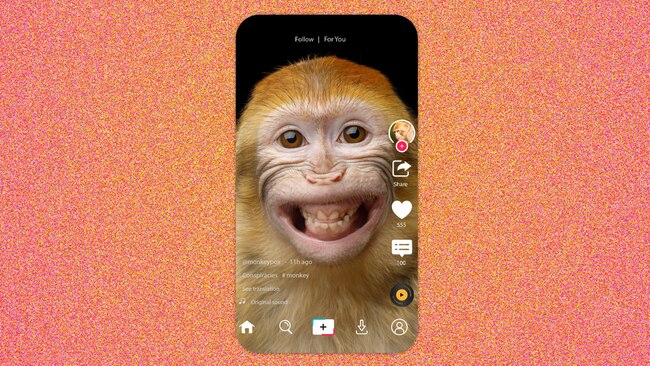Monkeypox: Viral conspiracies plague social media
Hundreds of videos touting Monkeypox misinformation have been uploaded to TikTok, as experts call on public health officials to monitor social media for the mistruths.

Hundreds of videos touting Monkeypox misinformation have been uploaded to TikTok, as experts call on public health officials to monitor social media for the mistruths.
Monkeypox conspiracy theories are running rife on TikTok, with videos spruiking misinformation gathering millions of views and experts calling for social media to be closely monitored by public health agencies to debunk falsities.
A new study from the University of Alberta in Canada identified more than 153 videos on TikTok spouting monkeypox misinformation, racking up 1,485,911 views, 74,328 likes, 7890 comments and 13,738 shares.
51 of the videos shared were related to vaccines and asserted monkeypox was an excuse to administer or mandate vaccines worldwide.
Vaccine manufacturers and governments were accused of knowing of an upcoming outbreak or having a role in creating the outbreak.
Some videos alleged that government approval or orders of smallpox vaccines were proof of involvement, while others alleged that Covid-19 vaccines were the reason for the continued outbreak.
One of the more outlandish accusations was that Bill Gates was involved in the initial outbreak of the disease. Specifically, Gates’ comments about a possible bio-terror attack or laboratory-created pandemic were cited, with some allegations of Russian government involvement.
“Our results demonstrated the potential use of real-time social media data to identify and understand conspiracy theories before their viral spread,” the researchers reported in their final findings.
“The Covid-19 pandemic has shown the challenges of viral misinformation and the need to proactively deter it.
“Public health experts may consider greater attention to and investment in monitoring the online environment.”
Australia's Monkeypox outbreak
Some 140 cases of MPX have been detected in Australia since the global outbreak first began in May this year.
That includes 69 in Victoria, 54 in New South Wales, seven in Western Australia, five in Queensland, three in the Australian Capital Territory, and two in South Australia.
Epidemiologist Mike Toole told The Oz that unlike Covid, which launched the world into a period of unknown, we’ve understood how Monkeypox works for a long time.
“It’s typically been confined to Central and West Africa, but with two different strains between the two regions,” he said.
“The Central African strain has a 10% mortality rate, and the West African strain has a 1% mortality rate. The West African one is what we’re seeing in these countries.”
Funnily enough, Monkeypox doesn’t typically spread through monkeys, Toole said. It’s probably spread by rodents, with a few of the US cases proven to have come from imported rodents which then spread to squirrels.
“The reason there’s concern about this outbreak is that it’s the first outbreak among people, most of whom have had no travel history to places where Monkeypox exists,” Toole said. “That has raised a few questions.”
Monkeypox is transmitted from person to person, but transmission happens with very close contact with, say, the rash that emerges or by rubbing against an infected person’s bedding or clothing. It is much harder to transmit than Covid-19.
Australia also has two vaccines to fight the disease: one vaccine that specifically works against Monkeypox, and one that works against Monkeypox and smallpox.



